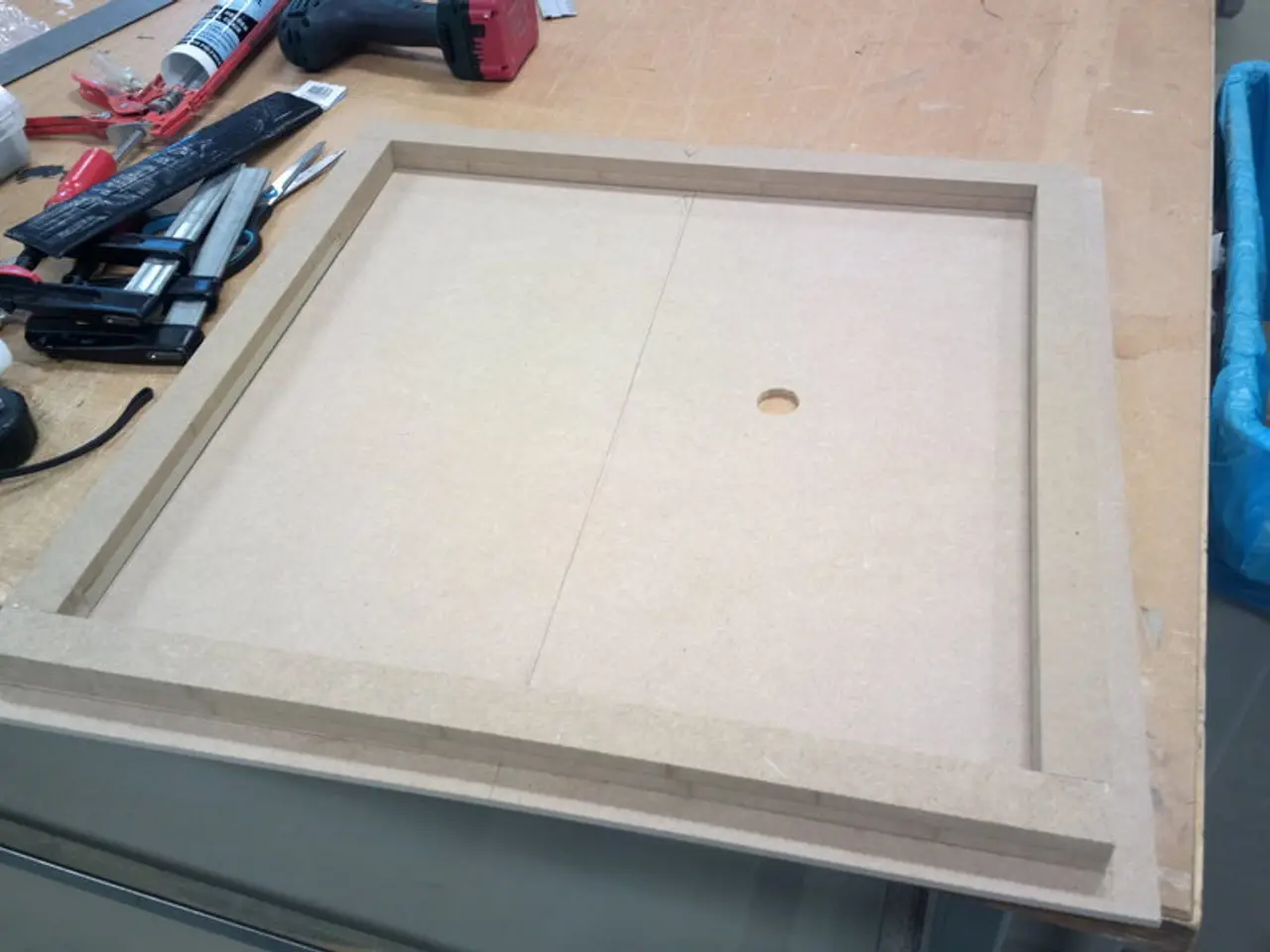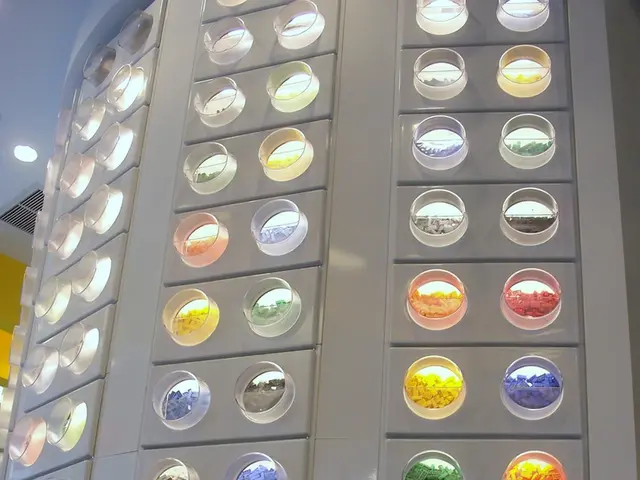Experienced for fifteen years in handling scalding soldering irons, I've endured the pain to provide you with the most effective techniques - here are my top 21 soldering iron tips distilled.
Chill 'n' Solder: Your Guide to Solder like a Champ
Get ready to burn a fresh joint! You've scoped out the top-tier soldering irons and stations — now it's time to get down to the gritty details. Here are some hot tips to keep you safe while you're at it!
Safety Comes First, Baby
Before we dive in, let's cover the basics to keep you in one piece. (I know, you're pumped to solder, but trust me, this is a good idea!)
- Keep your grubby mitts off the hot end: Soldering irons get really hot! Be careful not to touch them, even if you drop one — trust me, I've got the scars to prove it.
- Clear your workzone: Move everything away from the area you'll be working in. A clean workspace means fewer distractions and more focus on the task at hand.
- Keep your tools within reach: Think about it. Your hand is gripping a sizzling hot iron. Can you grab something without burning yourself? Make sure everything you need is close at hand and within easy reach. Use a silicone soldering mat to mark your working area and protect your bench.
- Handle the fumes: Solder fumes ain't doing you any favors. Make sure you have good extraction or at least open a window to ventilate. And don't forget your safety glasses — they're not just for show!
- Stay safe: Soldering can be messy, and things can get hot. Keep yourself protected to avoid accidents.
TIP: Want to Stay on Top of the Game? Sign up for the Tom's Hardware Newsletter to get the hottest news and in-depth reviews delivered straight to your inbox.
The Right Tools for the Job
Just like a blacksmith needs the right hammer, you need the right tools for soldering. The wrong kit will make your life miserable, trust me — I've been there!
- Pick a Soldering Iron that's got a bit of muscle: Skip the puny 8W USB soldering iron. It won't cut it for heavy-duty cable work. On the other hand, a soldering gun isn't the best for precision. I dig a soldering station with a hot air wand, like the Yihua 938BD, but it's not portable — so whatever you're soldering needs to stay in one place. For portability, iFixit's portable soldering station is a decent choice, but it's pricey.
Looking for something with a good balance of power and portability? Consider smart soldering irons like the Frnirsi HS-01 and HS-02. I prefer the HS-01, but both are solid options. Want something even smaller? The Pinecil v2 and Miniware TS101 are solid choices.
- Choose the right soldering tip: Are you laying down the heat, or do you need precision? The go-to conical tip is a good choice for most jobs, but if you need precision, a sharp pointed tip can help. The downside? It takes longer to heat up since the surface area is small. For a good compromise, go for a chisel tip. I use a 34-degree chisel tip for a balance between heating power and precision.
- Invest in some good flush cutters: After you've soldered something beautiful, those ugly component legs need to go! Don't skimp on cheap cutters — a good pair will make your work look even better. I stick with the Engineer NS-04 Micro Nippers.
- Protect your hands: Your fingers are delicate, and you don't want to burn them. Grab a pair of tweezers to hold components in place. Trust me, your dainty digits will thank you when you're working with surface mount components.
- Keep your tip clean: Your soldering iron tip should be sparkling clean and free of debris. Gross stuff on the tip will wreak havoc on your soldering. Most soldering stations come with a sponge, so keep it handy! I prefer a brass tip cleaner for a cleaner tip and to keep moisture off the bench. Every now and then, take the time to clean your tip for optimal soldering. I use tip tinner to remove crud and oxidation.
- Choose the right solder: Solder comes in different flavors, but it boils down to leaded or lead-free options. Lead-free is just fine, but it can be a bit tricky to work with. Adjust your soldering temperature and duration accordingly. The upside? You can sell products that use it — unlike lead solder. Lead solder does indeed have lead, but be responsible with it —initialize good ventilation.
- Stock up on isopropyl alcohol: This stuff is a game changer! Use it to clean boards after a soldering session to remove flux residue and give your board a shiny new look. Pour some into a cup, grab a fresh toothbrush, and scrub away! High-strength bottles last ages.
- Invest in multiple soldering kits: Nobody's an instant soldering pro. Get some cheap kits from AliExpress, Temu, or eBay to practice and have fun. Buy through-hole kits and some surface mount (SMD) practice kits. The LED dice kit is a great way to learn and have a useful tool at the end.
Solder Time, Bitches!
You've followed all the rules, so now you're ready to solder! Let's walk through the key steps to soldering components to a board like a pro.
- Set your temperature: Your soldering iron's working temperature is a matter of personal preference. I work at 350°C for a good balance of heat and time. For larger joints, I boost up to 400°C, but that's 99% of the time. Whatever temperature you choose, let the tip stabilize before diving in.
- Tin the tip: Bring a little solder to the tip, let it melt, and wipe off the excess. This will help improve the heat transfer and keep your tip in tip-top shape.
- Bring the tip to the work area: Place your iron at an angle so that it touches both the points of contact — for example, the leg of an LED and the pad on the PCB.
- Heat it up: Once it's heated, apply solder to the opposite side of the iron. The heat will draw the solder, forming a neat, conical joint around the lead. Avoid placing the solder directly onto the iron tip without heating the joint.
- Check the solder joint: Does it flow smoothly around the joint? Are there any gaps, or is the joint hovering off the point of contact? If needed, touch the iron back to the joint and reflow the solder. Take a peek to see if your joints are looking good. A magnifying glass can help if you want to get up close and personal.
- Trim those suckers: Use your flush cutters to trim the component leads.
- Clean up: Return the iron to the joint, heat it up slightly, and smooth out any rough areas.
Follow these hot tips, and you'll be melting joints like a pro in no time. Happy soldering, folks!
- When equipping your solder stations, ensure you have technology-driven tools such as a smart soldering iron, like the Frnirsi HS-01 or HS-02, for efficient and reliable performance.
- Just as technology enhances our daily lives, it also plays a crucial role in soldering. Invest in good soldering tips, flush cutters, and solder, which are all integral pieces of technology that can greatly impact the quality of your work.








